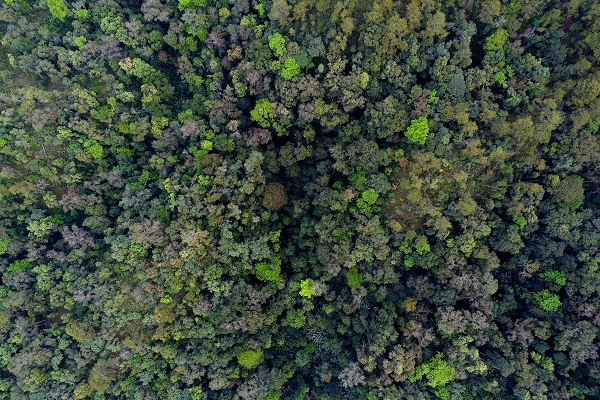Recent advances in metabolomics are improving our understanding of the ecological impacts of plant chemical diversity. However, few studies have examined how phytochemical diversity affects herbivore damage at the community scale in tropical tree communities.
In a study published in Ecology Letters, researchers from the Xishuangbanna Tropical Botanical Garden (XTBG) of the Chinese Academy of Sciences investigated the relationship between community phytochemical diversity and herbivore-induced leaf damage, by integrating untargeted metabolomics, a plastome-based phylogeny, and a long-term tropical forest monitoring plot of 358 species.
Using untargeted metabolomics, the researchers evaluated secondary metabolites and measured herbivory for 358 plant species in a 20-ha forest dynamics plot in tropical rainforest of Xishuangbanna, southwest China.
The researchers subdivided the plot into 20 × 20 m quadrats (500 in total) and used species-level metabolome and herbivory observations to calculate phytochemical diversity and dissimilarity and herbivory in local tree communities, and examined their relationships with light environment and soil nutrients at the spatial scale.
They reported no phylogenetic signal in most compound classes, indicating rapid diversification of tree metabolomes. They found that locally co-occurring species were more chemically dissimilar than random, and that local chemical dispersion and metabolite diversity were associated with lower herbivory, especially that of specialist insect herbivores.
The results showed a decrease in overall herbivory as metabolite diversity within the community increases. Plant neighbors with diverse secondary metabolites reduced herbivore damage, especially for specialist herbivores with limited host ranges and the potential for density-dependent impacts on plants.
The role of specialist herbivores in promoting local neighborhoods of chemically dissimilar and diverse trees suggests that chemically mediated plant-herbivore interactions represent a key component of the niche with the potential to contribute to the maintenance of tree species diversity in tropical forests.
"Our results highlight the role of secondary metabolites in mediating plant-herbivore interactions and their potential to facilitate niche differentiation in a manner that contributes to species coexistence," said YANG Jie of XTBG.







